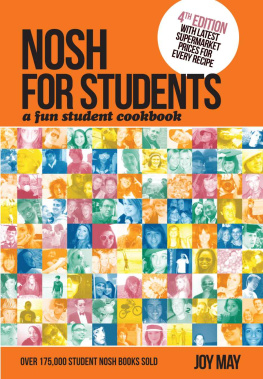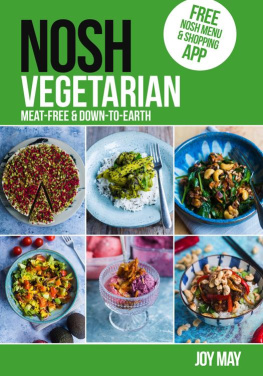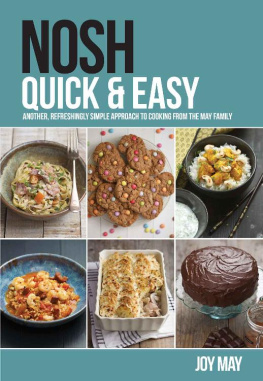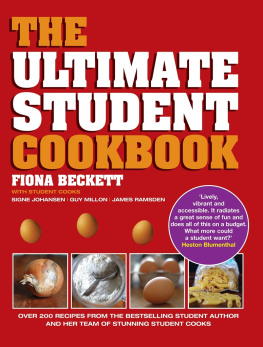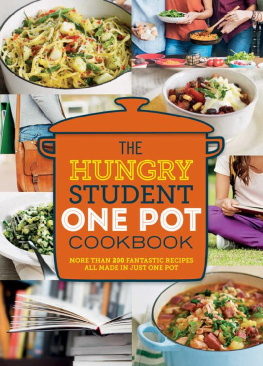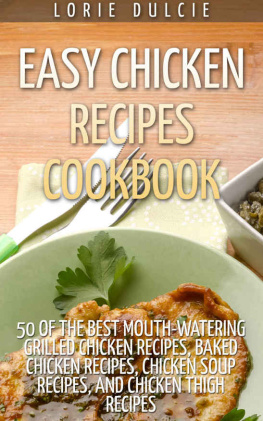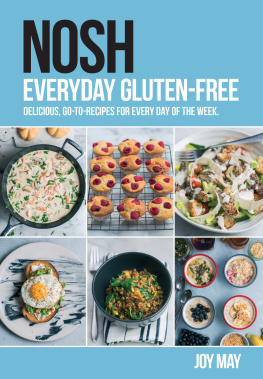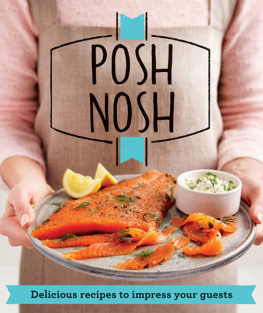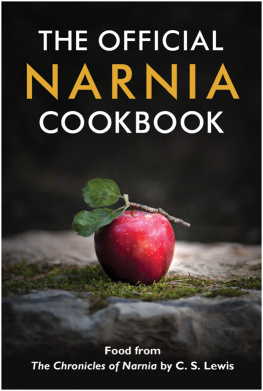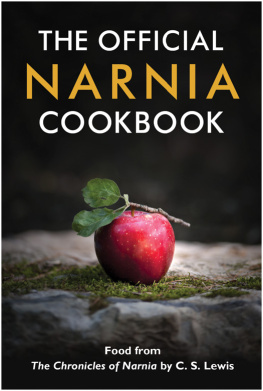





This book which was originally inspired by Ben, my oldest son, as he left for uni with virtually no cooking skills. His staple of toasted sandwiches, milk and Mars Bars werent enough to sustain him. He needed to be able to cook. I started by sending him recipe cards, but without photos, it just didnt inspire him to get the pots and pans out to cook. I looked for good student recipe books, but, at the time, there were none with photos and Ben wanted to see what he was aiming at. I realised something more proactive was in order, so I started to write the first edition of what became Nosh4Students.
Since first publishing the book back in 2002, we have been helping people, like Ben, to cook for themselves and, hopefully, get beyond just surviving into actually enjoying to cook.
Recipe Costs
The recipe costs in this book are an average between Tescos and Sainsburys and are the prices at the time of writing. To keep the pricing very relevant, we will update them each time we do a new print run. Latest costs are at March 2013 .

One of the key features of this book is that you do not need weighing scales and special measuring equipment. These things are scarcely found in student accommodation.
Throughout the book I have used a mug to measure ingredients. This mug holds 12 a pint of liquid and is the size of the mug pictured here..



It is good to plan a menu for the week. This makes cooking much easier, since you will not be dashing to the shops the whole time for little things. It also means you will not waste food, as you will just buy what you need for the week. Try the planner on the opposite page.
Buy in 'bulk' when things are on offer in the supermarkets. Separate into portions in airtight freezer bags and store in your freezer drawer.
Buy whole chickens and cook them . Use the meat for one meal, then use the rest later for sandwiches, baked potatoes, salads, or risottos. This is much cheaper than buying ready-cooked chicken and it is a whole lot tastier.
Always make sure, that when you visit home , you return to uni having creamed off any excess from mum's cupboards!
If your parents, or anyone you know, shop at wholesalers such as Costco or Makro, get them to buy stuff in bulk for you. Bring it to uni in smaller portions. Youll save a fortune in the long run. 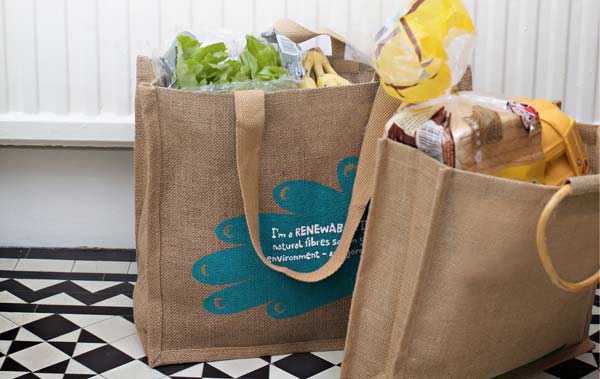
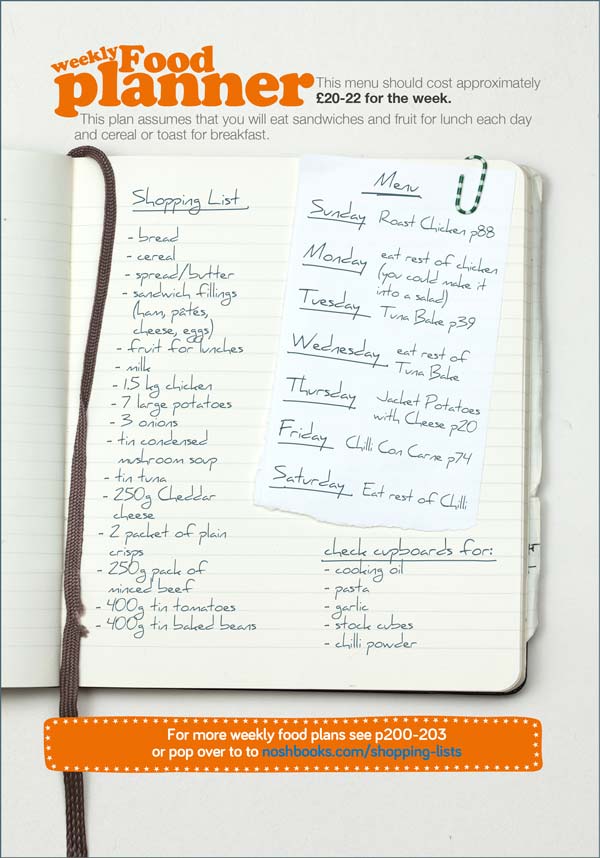

Here are some basics to keep in your storecupboard and fridge. In student halls, or shared houses, you will usually have a shelf in the fridge, one drawer in the freezer and a cupboard to yourself.
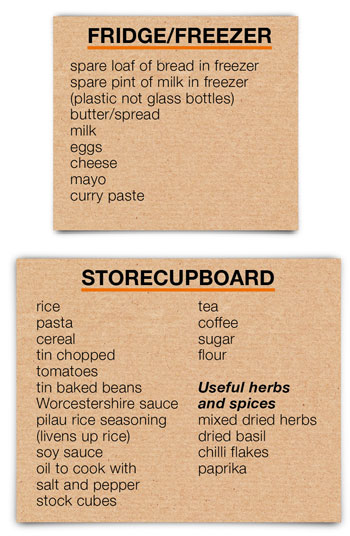

Sell-by dates are when the store needs to sell things by. Use-by dates are indications that you should not be eating them after said date.
Here are some basic guidelines that should help you avoid making yourself ill:

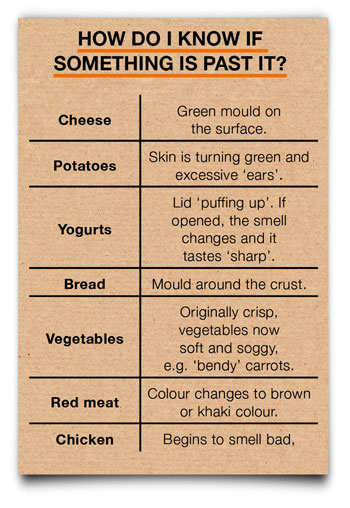
Take care when reheating food that you heat it thoroughly. It should be piping hot. This means all the food should be steaming and the plate needs a cloth to get it out of the microwave.
To reheat a plate of food in microwave, cover it with cling film and place on a high heat for approximately 312 mins in a 600watt microwave. However, refer to point above if you are unsure.
Best not to reheat pork, bacon or shellfish.
Keep things covered in the fridge . This helps things last longer and rules out cross-contamination, especially if you share a fridge with someone who leaves disgusting things in there!
If you cook a meal one day, eat any leftovers the next day and not after that.
Be very careful with rice . Cool it quickly and place it in the fridge. Use plastic boxes to store things, like cheese, in the fridge. Cling film is a wonderful invention.
Dont keep opened tins in the fridge; a chemical reaction occurs, affecting the food, once the tin is open to the air. Transfer any excess to a bowl and cover with cling film.
Keep potatoes out of the fridge and in a cool, dark place. This can be inside a cupboard, as it stops them going green so quickly.
Here are some things that will help you enjoy cooking and hopefully minimise discouraging failures. 
It could be, that if you have an older oven, the thermostat is not working quite as well as it should. Dont give up, just adjust by raising or lowering the temperature you set it to. Also, the temperatures in some ovens can vary a great deal, depending on which shelf you put your food on. Where possible, use middle shelves. Check what kind of oven you have: Centigrade, Centigrade fan oven or Fahrenheit oven. Then check the temperature on the recipe.
Keep the food in the freezer bag and place in cold water. Dont use boiling water. The best thing is to plan ahead, take food out of the freezer and leave in the fridge overnight to defrost.
Cover the dish with tin foil.
Use your fingers or a spoon.
With Chilli Con Carne, just try adding another tin of tomatoes. With a curry, peel and cut a potato into four and add to the curry. Simmer for 10 minutes and remove potato.
Next page
